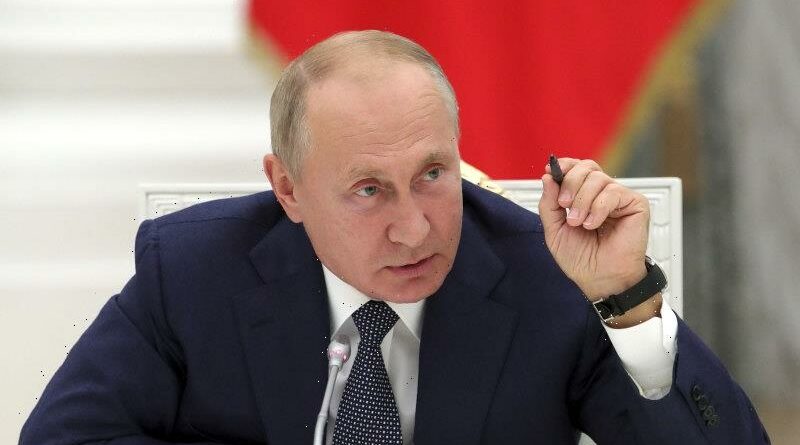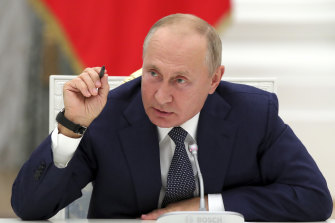What Putin means by nuclear signalling
London: Vladimir Putin’s nuclear threat is most likely intended to deter further Western involvement in the Ukraine war.
Russian leaders will have read the calls from Ukrainians for a no-fly-zone over their country, policed by NATO air forces.
Russian President Vladimir Putin ordered his nuclear forces be “on alert”. Credit:AP
British Defence Secretary Ben Wallace, along with all Western governments, has rejected the idea, making clear that NATO has no intention of going to war with Russia. But the paranoid occupant of the Kremlin won’t take their word for it.
Putting nuclear forces on alert, on this line of reasoning, is intended to send a simple message to NATO – keep out of this war, and do not get any more committed than you already are.
Otherwise, the Russian President is saying, it could be Western cities, from Berlin to London to New York that could be threatened.
NATO’s nuclear powers – the US, UK and France – do not need to make a nuclear response. One of the great advantages of having a submarine-based nuclear deterrent is that, in crises such as this, the Western powers do not need to visibly raise the alert status of their forces.
Their submarines are safe from preemptive strike without doing so. Putin and his general staff know that the UK – like the US and France – has the capability to inflict terrible damage on Russia if it, or its NATO allies, were to be attacked. That is enough.
The onus should be on Putin to explain his dangerous announcement. But analysts will be watching carefully to see which Russian nuclear forces are being placed on increased alert.
Most likely it would only involve Russia’s “strategic” forces – the submarines, intercontinental missiles and bombers that could deliver nuclear Armageddon on the US or Western Europe within 30 minutes of a launch order. In relative terms, at least, this would be less worrying. For it would imply that the primary purpose of the nuclear alert is to deter an American military intervention in the Ukraine crisis – something which President Joe Biden has made clear that he has no intention of launching.
It would, paradoxically, be more worrying if Russia were to put its shorter-range nuclear forces – which cannot reach Britain or America – on alert. In peacetime, warheads for these systems are kept in central depots, well away from the missiles and artillery which would be used to deliver them. If this were to change, it could be seen as a threat to use nuclear weapons directly in Ukraine itself. This seems unlikely for now, not least because most of the invasion force has not been committed to battle, and the odds remain in favour of a conventional military victory (albeit one followed by a bloody insurgency).
Putin’s reckless nuclear signalling is a salutary reminder that the world needs to bring this terrible war to a conclusion. As long as it continues, there is a risk that the conflict could escalate and spread, in ways that are hard to predict today. A Putin who feels he has run out of options could be even more dangerous than he is now.
Malcolm Chalmers is Deputy Director-General at the Royal United Services Institute.
The Telegraph, London
Most Viewed in World
From our partners
Source: Read Full Article



